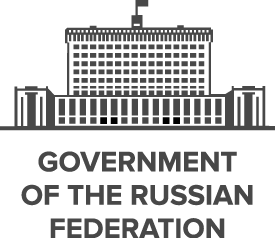Founded in the 12th century, the Principality of Muscovy was able to emerge from over 200 years of Mongol domination (13th-15th centuries) and to gradually conquer and absorb surrounding principalities. In the early 17th century, a new ROMANOV Dynasty continued this policy of expansion across Siberia to the Pacific. Under PETER I (ruled 1682-1725), hegemony was extended to the Baltic Sea and the country was renamed the Russian Empire. During the 19th century, more territorial acquisitions were made in Europe and Asia. Defeat in the Russo-Japanese War of 1904-05 contributed to the Revolution of 1905, which resulted in the formation of a parliament and other reforms. Repeated devastating defeats of the Russian army in World War I led to widespread rioting in the major cities of the Russian Empire and to the overthrow in 1917 of the imperial household. The communists under Vladimir LENIN seized power soon after and formed the USSR. The brutal rule of Iosif STALIN (1928-53) strengthened communist rule and Russian dominance of the Soviet Union at a cost of tens of millions of lives. After defeating Germany in World War II as part of an alliance with the US (1939-1945), the USSR expanded its territory and influence in Eastern Europe and emerged as a global power. The USSR was the principal adversary of the US during the Cold War (1947-1991). The Soviet economy and society stagnated in the decades following Stalin’s rule, until General Secretary Mikhail GORBACHEV (1985-91) introduced glasnost (openness) and perestroika (restructuring) in an attempt to modernize communism, but his initiatives inadvertently released forces that by December 1991 splintered the USSR into Russia and 14 other independent republics.
Following economic and political turmoil during President Boris YELTSIN's term (1991-99), Russia shifted toward a centralized authoritarian state under the leadership of President Vladimir PUTIN (2000-2008, 2012-present) in which the regime seeks to legitimize its rule through managed elections, populist appeals, a foreign policy focused on enhancing the country's geopolitical influence, and commodity-based economic growth. Russia faces a largely subdued rebel movement in Chechnya and some other surrounding regions, although violence still occurs throughout the North Caucasus.
Russia is a semi-presidential federation.
Members:
Resources
Displaying 921 - 925 of 1046Order No. 1 of the Ministry of Economic Development validating the Regulation on terms and conditions of registration of immovable property.
This Order establishes terms and conditions of registration in the state cadastre of immovable property of the plots of land, construction, edifices and other objects of immovable property subject to state registration, and transfer to the competent cadastre authority of technical certificates related to the objects of immovable property subject to state registration.
Order No. 280 of the Ministry of Economic Development regulating lease of public land for disposal of solid domestic waste.
This Order establishes rent rates for lease of public land for disposal of solid domestic waste. Rent rates shall be set as percentage of cadastre value of land plots.
Federal Law No. 246-FZ “On artificial land plots”.
This Federal Law regulates relations originating from creation of artificial land plots on waterbodies pertaining to federal property. Artificially created land plot can adjoin existing land plots or be separated therefrom. Initiators of creation of artificial land plots can be federal executive bodies, regional executive bodies, local self-government, natural persons, including individual entrepreneurs, and legal persons. Authorization for creation of artificial land plot shall be granted by the Government, authorized federal executive body and regional executive body.
Federal Law No. 257-FZ amending Land Code.
Item 6 of the Article 56 shall be amended to add the following wording: “Restriction of right of use of land shall be subject to state registration in cases envisaged by the federal legislation”.
Amends: Land Code (No. 136-FZ of 2001). (2001-10-25)
Federal Law No. 246-FZ “On artificial land plots created in waterbodies pertaining to federal property”.
This Federal Law regulates relations concerning creation of artificial plots of land in waterbodies pertaining to federal property with a view of construction on them. Artificially created plot of land can be either adjacent to existing plots of land or be separated from them (art. 3). Project of creation of an artificial plot of land shall be inserted in land use planning project, specifying projected purposeful use of artificial land plot (art. 4).


